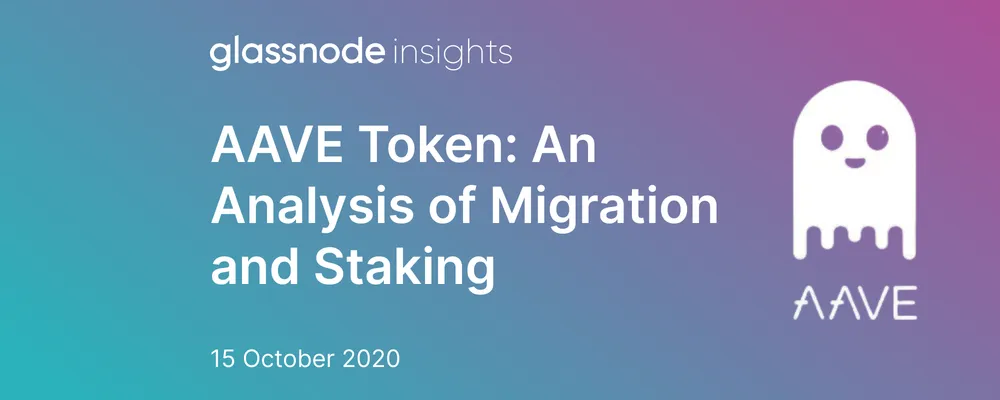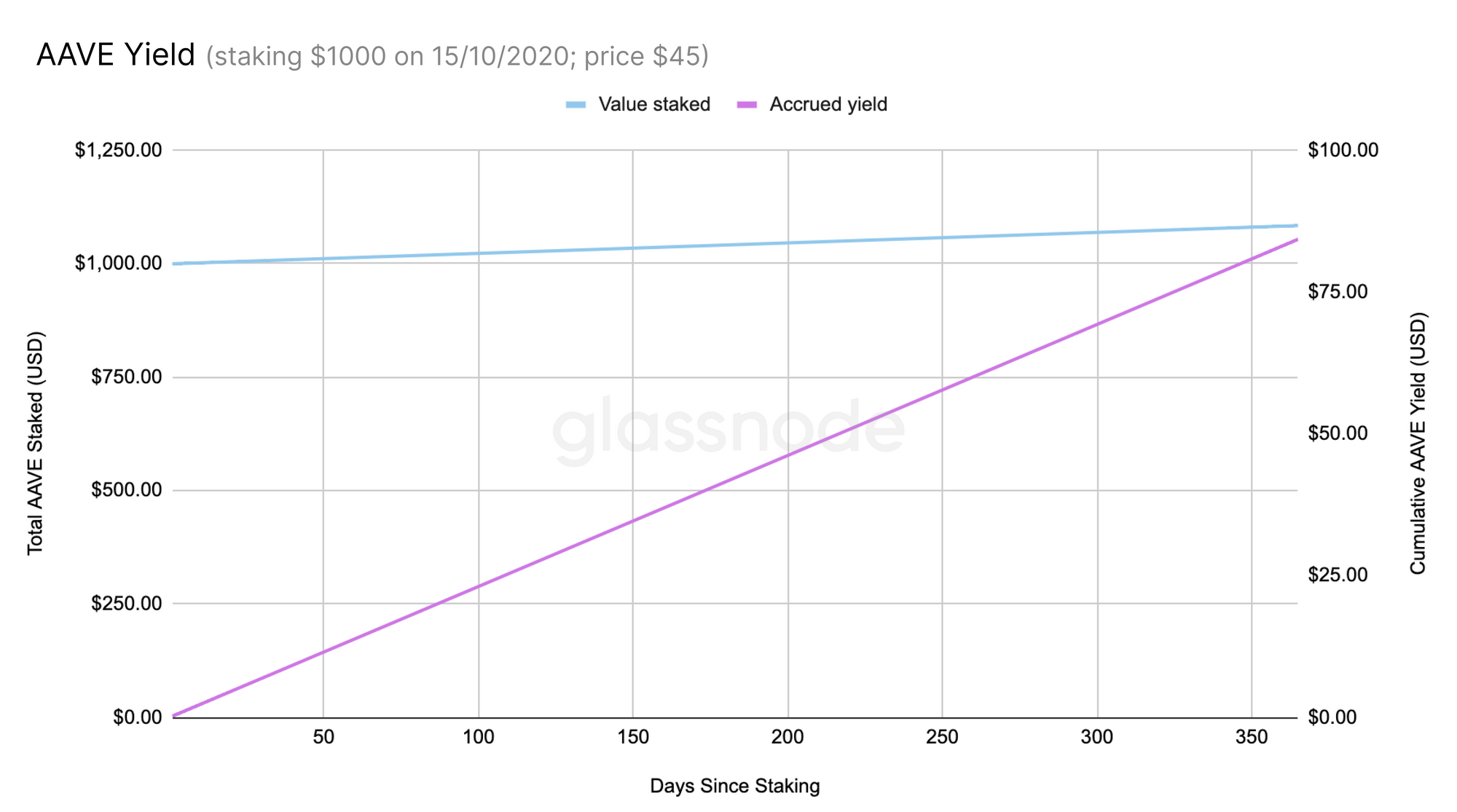AAVE Token: An Analysis of Migration and Staking
Aave - one of Ethereum's most popular lending platforms - is currently migrating from the LEND token to the AAVE token. Its new staking model promises favorable rewards for a relatively safe investment.

What is Aave?
Aave is a lending platform on Ethereum. According to the website, it is "an open source and non-custodial protocol enabling the creation of money markets", through which users can earn interest on deposits and borrow assets.
In simplified terms, Aave enables users to lend and borrow a range of Ethereum-based cryptoassets. Borrowers can choose from either stable or variable interest rates, and lenders can collect interest, with some assets fetching rates of over 5% p.a.

In addition to regular lending, Aave also offers uncollateralized flash loans, rate switching, and unique collateral types such as LP tokens, as well as insurance via Nexus Mutual.
Token Migration: LEND to AAVE
The protocol's native token, LEND, was launched in November 2017 through an ICO that raised $600,000 in ETH. The token was initially designed to provide holders with discounted fees, with plans for eventual staking and governance functionality.
However, after the recent approval of the first ever Aave Improvement Proposal, the protocol is deprecating the LEND token and encouraging holders to migrate to the new AAVE token.
The migration is being executed at a 100:1 ratio, meaning that 100 LEND can be exchanged for 1 AAVE (with 1 AAVE therefore being worth around 100x more than 1 LEND). The total supply of AAVE will be 16 million, with 13 million being minted for the migration, and an additional 3 million being allocated to the "Aave Ecosystem Reserve", a treasury fund which will reward ecosystem participants in the future.

The migration went live on 2 October 2020. At present, less than two weeks later, over 70.5% of LEND tokens have been voluntarily migrated to AAVE.

As the migration takes place, the number of addresses holding AAVE is increasing rapidly. However, it currently sits at only around 2200, as opposed to the 160,000 addresses still holding LEND.

This is likely because many addresses holding LEND represent small balances of lost/forgotten coins or abandoned dust. On the other hand, the reason AAVE isn't held in more addresses is because much of it is still held in the migrator contract, on exchanges, or in the staking contract - and as such, it is not directly in the hands (or wallets) of its owners.

The AAVE Token
The AAVE token is the new governance token of the Aave Protocol. Migrating from LEND to AAVE allows users to participate in protocol governance and stake their AAVE tokens.
AAVE Token Staking
Staking AAVE essentially amounts to insuring the protocol. Staked tokens go into the Safety Module (SM), which is designed as an additional line of defense for Aave liquidity providers.
Currently, the SM is not yet active, meaning that token holders can stake their AAVE essentially risk-free. However, the plan in for the SM to be activated by the Aave team sometime in the future, after a liquidity mining phase. Once this happens, in the case of a shortfall event (i.e. if there is a state of deficit for liquidity providers), the SM will use up to 30% of the assets locked to cover the deficit.
According to Aave's docs, "if the amount seized from the SM is not enough to cover the whole debt, an ad-hoc AAVE issuance event is triggered called Recovery Issuance. The issued AAVE are used, together with the amount drawn from the SM, to cover the deficit."

Staking Rewards
Because of this mechanism, AAVE holders are taking a risk when they stake their tokens. As a reward for taking this risk, stakers will earn yield in the form of AAVE as a Safety Incentive (SI).
Initially, the SI rewards will be distributed at a rate of 400 AAVE per day (currently valued at around $18,000). These tokens will come from the Aave Ecosystem Reserve, which started off holding 3 million AAVE tokens (18.75% of the total supply of 16 million). Like many other aspects of the protocol, the distribution rate is subject to change via a governance vote.
What Might Cause a "Shortfall Event"?
Like all smart contract-based platforms, the Aave protocol is at risk of failure due to bugs or attacks. In addition, market movements or third party app dependencies may also result in shortfall. Aave identifies several risk factors that could cause such an event:
- Smart contract risk: Risk of a bug, design flaw or potential attack surfaces on the smart contract layer.
- Liquidation risk: Risk of failure of an asset that is being used as collateral on Aave; risk of liquidators not capturing liquidation opportunities in a timely manner, or low market liquidity of the principal asset to be repaid.
- Oracle failure risk: Risk of the Oracle system not properly updating the prices in case of extreme market downturn and network congestion; risk of the Oracle system not properly submitting prices, causing improper liquidations.
In the unlikely event that one of these eventualities takes place, the protocol's users will essentially be "bailed out" by AAVE stakers.
Potential Returns: AAVE Staking Rewards
Currently, around 1.73 million AAVE are staked in the contract. As such, a user staking 22.22 AAVE ($1000 worth) would receive 0.0051 AAVE ($0.23 worth) per day - a daily return of 0.0023%.
Compounding (if we assume that the price stays constant and the staking pool grows only by the newly added 400 AAVE per day), this results in an annual yield of 8.41%, or $84.10 per year on a $1000 investment.

While this may seem small in comparison with many of the liquidity mining projects popping up in the DeFi space, an 8.41% APY is a healthy rate of return for a relatively safe DeFi investment. Notably, it is higher than any of the interest rates currently available via lending on the Aave protocol itself.
However, it is likely that more users will stake their AAVE over time, and as such, the actual APY may be lower than this figure. On the other hand, if the token price increases, annual yield could actually end up being higher than 8.41%.
How to Stake AAVE
To stake AAVE tokens, users can visit the staking portal on Aave's native dashboard.

Note that in order to unstake AAVE, users are subject to a 10 day "cooldown period" to prevent sudden unstaking in the event of a shortfall or significant price movement. This cooldown period is also subject to governance, so may become longer or shorter in the future.
Conclusions
The new AAVE token model introduces an innovative form of crowd-sourced insurance and community participation while rewarding ecosystem members and leading the protocol closer toward decentralized governance.
For users, staking AAVE presents a certain level of risk, but considering the protocol's history of staying secure and solvent, this risk is likely outweighed by the potential returns - which, currently, are notably higher than the yield offered by other similarly safe investments, including lending on Aave itself.
To delve deeper into the AAVE token and its fundamentals, check out our metrics on Glassnode Studio.

- Follow us and reach out on Twitter
- Join our Telegram channel
- For on–chain metrics and activity graphs, visit Glassnode Studio
- For automated alerts on core on–chain metrics and activity on exchanges, visit our Glassnode Alerts Twitter
